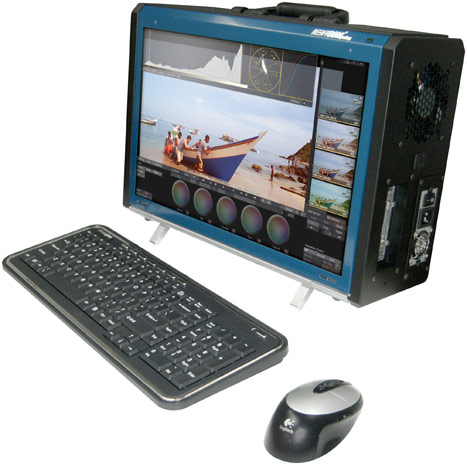Workstation vendors have now booked two consecutive quarters of negative growth, according to the latest report from Jon Peddie Research; that hasn’t happened since 2008.
Those looking for the first quarter of 2012 to provide some undeniable proof that the workstation market was breaking out of its recent holding pattern were disappointed. Alex Herrera, Senior Analyst at Jon Peddie Research, reports that around 918.4 thousand workstations shipped worldwide in the quarter, as the market shrunk further from the peak of 1.02 million units it had managed back in Q3’11.

The quarter certainly wasn’t dismal, and industry stakeholders can take some comfort in a couple of bright spots, with average sales price (ASP) remaining firm, for example. The bulk of the results, however, weren’t positive, pushing Herrera’s overall assessment of the market from relatively flat in 4Q11 to down in 1Q12. According to Herrera, the market has now experienced two consecutive quarters of negative growth, marking the first such occurrence since the third and fourth quarters of 2008, just as the world economy was imploding. Second, the sequential decline of 8.1% is not only more substantial than we’d typically see by cyclical norms, it’s based on a comparison to 4Q11, which itself saw tepid performance.
Still, it’s not like the sky is falling. According to Herrera, “the market just needs a kick start, and it should see that in second quarter results, behind the momentum of a top-to-bottom refresh of workstation-class platforms from Intel.” The analyst points out that Intel’s Romley platform based around Sandy Bridge-EP appeared in March, spawning premium deskside models from every major vendor. And the first incarnations of the next-generation Ivy Bridge is now triggering new low-end desksides with a full range of mobile workstation models. “Because of Intel’s timing this cycle, every major workstation OEM will be overhauling their entire line in the span of a couple of months, a sequence that should yield more bullish market results for Q2.”
Market leader HP’s growth stalls, while Lenovo continues to roll
Responsible for 39.5% of units shipped in the fourth quarter, HP remains in control over the workstation market, holding a substantial lead over Dell at 32.4%. Herrera noted that while HP’s workstation business remains a company jewel, the market leader will likely find tougher competition in the market coming not only from Lenovo—currently number three and showing the most quarterly growth of the bunch—but from a rejuvenated Dell as well. The former top dog in workstations has finally appeared to retrench and recommit to the business, as evidenced by the impressive overhaul of its Precision line-up last month.
The momentum AMD had been able to muster in the related market for professional graphics hardware has not only petered out, it’s now turned backward. AMD’s FirePro brand did not gain on Nvidia’s Quadro in 4Q11, rather it went in reverse, coming in at 18.4%. Worse, in the first quarter of 2012, AMD’s taken a bigger step backward, with FirePro now falling to just 15% of units.
More information: http://jonpeddie.com/press-releases/details/the-workstation-market-still-looking-to-break-out-of-its-recent-doldrums/





